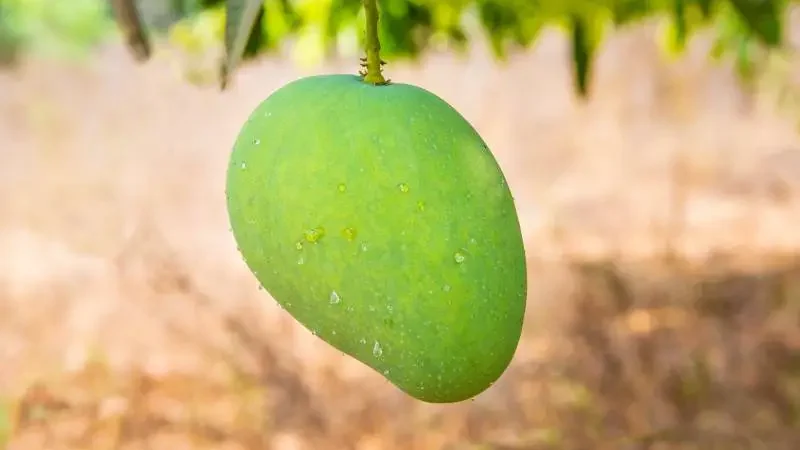Where Are Mangoes Grown
Mangos have been featured as a staple in our diet, with documentary evidence for their use and cultivation dating as far back as 4000 B.C.
They also played a central role in the mythology of Southeast Asia and India.

According to legend, the Buddha himself attained enlightenment under a mango tree.
However, it is unknown where these enigmatic fruits grow, as well as the best climates for their cultivation.
The Best Climate For Mangoes
Mango is a hardy breed of fruit that thrives in tropical climates, such as those that you can find in India – the birthplace of mangos.
It is closely related to poison ivy and sumac and thrives under a strict set of climatic laws. These regions have humid tropical rain that experiences heavy rainstorms all year long.
And although it grows in abundance in monsoon weather, the fruit that mango trees bear under such conditions isn’t suitable for commercialization. An extended dry season is necessary to produce mangos that are both profitable and widely consumable.
To this end, mango producers often employ a means of artificial manipulation to produce commercially viable fruit.
There is perhaps no greater illustration of the selective climates under which the mango fruit thrives than the world’s largest mango producer, India.
The lowlands of the Bengal with their moisture and humid rich temperatures are home to mango trees of a ragged, sickly appearance with fruit you can hardly describe as edible.
Yet despite mango trees growing in abundance in this area – the quality of its fruit contrasts with the quality of fruit found in Saharanpur. The dry plains of Northern India boast an all-around, dry, and hot climate that aids in the ripening of the mangoes.
With a brief monsoon season that lasts a couple of months, they achieve the golden ratio as far as mango fruits are concerned.
Where Are The Mangos Grown?
Asia
It is a significant commercial crop not only in India but also in Sri Lanka, the Philippines, Thailand, Burma, Indonesia, and Malaysia in Southeast Asia. Asia frequently uses the mango as a dessert fruit.
There are numerous varieties, with Thailand’s Tong Dum being one of the most popular. In all their forms and varieties, the global market for mango products was capped at $65.7B in 2018.
The monopoly on the market in terms of production remained in the hands of the mango’s native homeland, India. It’s home to a large expanse of cultivated land – 2 309 000 acres in total and climates conducive to large-scale agricultural production as far as the mango is concerned.
India produces over 18 million tonnes of mango yearly, which equates to more than half of the global mango supply.
Long periods of hot, dry weather are common in the states of Andhra Pradesh, Bihar, Orissa, Gujarat, Maharashtra, and Karnataka.
Sporadic months of rain are also common in these regions. This all makes India the world’s biggest mango producer by virtue of its temperant, tropical climates.
Thailand, Pakistan, Mexico, and China are just a few of the nations that cultivate mangos for commercial purposes.
China comes in second place in terms of export volume.

Despite making up a portion of the list’s population, the Americas account is only a very tiny fraction of the world’s total mango crop.
American and African producers jointly account for about 13 percent of the market.
In comparison, Asia alone provides 77 percent of the annual global supply.
Mango Season in India
In India, the southwest experiences the height of the mango season from April to July, and from June to July, the northeast experiences the same.
In the southern hemisphere, flowering begins in December or January and lasts until February.
Mango Season in Thailand
In Thailand, mangoes are in season from late March to early July. Vendors selling raw mangoes or using the fruit in a variety of dishes line the streets.
Mango Season in the Philippines
The Philippines’ mango season runs from March through June. Carabao Mango (also known as Philippine Mango), Pico, and Katchamita are the top three varieties.
The Carabo variety, the only one currently exported of the three, is the most popularly cultivated. It is renowned for its rich, sweet fragrance.
Mango Production In The U.S.
In the United States, there aren’t many mango farms. Tropical climates, such as southern Florida and southern California, are parts of the US where mangoes grow.
Mango production for commercial purposes began in Miami in 1863. Despite the local production of mangos, it isn’t enough to supply local demand.
Thus, most mangos sold in the US are imported from Mexico, Guatemala, Peru, Brazil, Ecuador, and Haiti.
About 86 percent of this import is from Mexico alone, granting it the prestigious title of being America’s biggest mangos supplier. America’s reliance on mango imports also has the added benefit of ensuring its availability to US consumers throughout the year.
This is due to the alternating harvest times throughout various regions of the globe. Within the confines of the US, the majority of locally produced fruit comes from the states of Hawaii, California, and Puerto Rico.
In the US, mangos are grown in a variety of soil types that include red clay to sandy loams. Many growers practice planting trees on sloping sites to optimize growth and flowering times by preventing waterlogging in the roots.
The mango fruits thrive in the ambient temperatures of the US mango-producing states, which range between 70-75 degrees Fahrenheit. Certain growing regions in the United States are subject to quarantine restrictions.
Such as in Hawaii, due to the frequent attacks of pests like fruit flies and mango seed weevils. The majority of mango trees native to the United States bloom in the winter. By late summer, they are ready for harvest.
When sold in the US, farmers have their mangoes picked before they are fully ripe. Keeping the stem on to prevent any juices from escaping.
After this, they develop a red plumage to signal their maturity, as they await their consumers in packinghouses.
The Top Mango-Producing Countries In The World
This fruit is native to India, Bangladesh, and Pakistan and is related to sumac and poison ivy. Its importance to humans dates back to around 2000 BC when it was domesticated in India. After domestication, the mango was introduced to East Asia between 500 and 400 BC. By the 15th century, it had made its way to the Philippines, followed by Africa and Brazil in the 16th century. Akbar, a Mughal emperor, planted over 100,000 mango trees in a place now known as Lakhi Bagh in India. Today, mango trees can be found in a number of tropical climates.
Conclusion
Mangoes have been a steady feature in many banquets and royal feasts since late antiquity. And if its growth figures are anything to go by, it will continue to do so well into the foreseeable future. Domestic production in America is limited to specific geographical locations.
The introduction of technology and artificial farming processes into the production of mangos will benefit the US.
These techniques can help the US gradually move off imports, and grow its domestic output.
